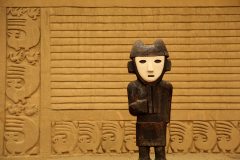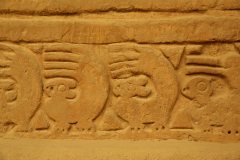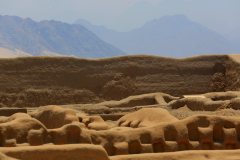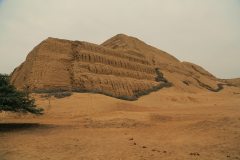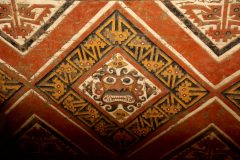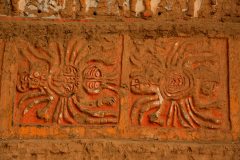Peru before the Spaniards arrived
Two great archaeological sites around Trujillo: former Chimu capital Chan Chan and Huacas del Sol y de la Luna (Moche temples), and bit of digging into Peruvian history
Before coming to Peru I thought that Peru’s history was totally defined by the Incas. I thought that the whole of Peru was about the ancient Incan Empire. Quite probably you also think so, because Peruvian history is not a typical scholarly subject back there in Europe. But I was wrong.
As I found out here, the Incas came very late and didn’t stay too long. Before the Incas there were dozens of smaller, ancient civilizations that flourished on the current Peruvian territory: Wari, Chimu, Moche, Chachapoyas, Nazca, … While being similar, all of them were unique and they reached high level of civilization progress. The Incas only appeared around Cuzco in 13th century AD. Yes,13th century. They were not as ancient as I thought at all. But soon they started their invasion into neighboring regions and before too long they conquered pretty much everything that lay between the Pacific Ocean and the Andes. Within just 100 years they built an empire stretching from Ecuador to southern Chile. But they didn’t enjoy their fortunes too long. Just when their conquest of lands between the ocean and the mountains was in its climax, Francisco Pizzaro entered the scene and by kidnapping and later murdering an Incan ruler Atahualpa he brought the Incan empire to its knees. 168 Spanish soldiers conquered empire with army of 40 000 – 80 000 soldiers. While there’s nothing to admire about Pizzaro’s brutality, one surely cannot deny courage of the Spaniards when they undertook this. As Pizzaro once said “We, the Spaniards, have a disease of heart that only gold can cure”. Well, they surely got cured over the top here in Peru (too bad that Pizzaro was murdered in Lima by his own people, not too long after he was cured from his disease of heart. In any case, the Incan rule of Peru was relatively short. And outside of Cuzco region you will not find too many Incan ruins. While the total population of Incan empire was around 10 million, ethnic Incas (or Quechuas as they called themselves, because the word "Inca" actually means "King" and only the kings were called by "Inca" prefix before their name) numbered only to 100 000 or so. Obviously, the Incas must have had been great warriors on their own, when they managed to control such a large empire with so few “true” Incas.
So what you will find outside of Cuzco regions are many ancient sites of other, pre-Incan civilizations. The north-central coastal area was once inhabited by 2 great civilizations: The Chimu and the Moche. And just around a corner from Huanchaco lie ruins of Chan Chan, the greatest city of the Chimus and once the largest city in South America. And supposedly the largest adobe city in the world. Back then, in 700 AD – 1300 AD, up to 100 000 people lived in Chan Chan. And then came the Spanish, looted the town and the great city of Chan Chan went into sharp decline. Its adobe pyramids, palaces and houses were over the centuries destroyed by rain and so today not too much remains. But when you enter the archaeological areal you can see how huge the town must have been: its once-proud-walls turned to piles of mud stretch over immense space. Only one part, so called Nik-An palace (also called Tschudi complex) remained in relatively good condition and was partially reconstructed to provide at least a glimpse into bygone grandeur of Chan Chan. The photos show these humble remainders of the once great desert capital.
On other side of Trujillo is another set of ancient ruins. This time belonging to Moche civilization which predated the Chimu. There are only 2 pyramids (Moches LOVED pyramids) left from their former capital. The bigger one is now in the middle of process of turning from a pyramid into a heap of mud and sand, but the smaller one features some totally amazing relief paintings. Beautifully preserved due to Moche’s habit to cover older parts of the temple by newer parts, they show a pantheon of Moche deities and details of their favorite ritual fighting that would end up by sacrifice of a defeated warrior. Think of gladiator combats, but not to please the Ceasar but to please the gods. They loved these rituals so much (supposedly to PREVENT heavy rain, which is something one would not expect to be feared of for civilization living in a desert) that when the rains continued on and on finally they sacrificed most of their army and the empire crumbled down. Smart!
And that it for our surroundings: the ruins of Chan Chan, Moche temples / pyramids and city of Trujillo. The rest is the desert and the ocean.
